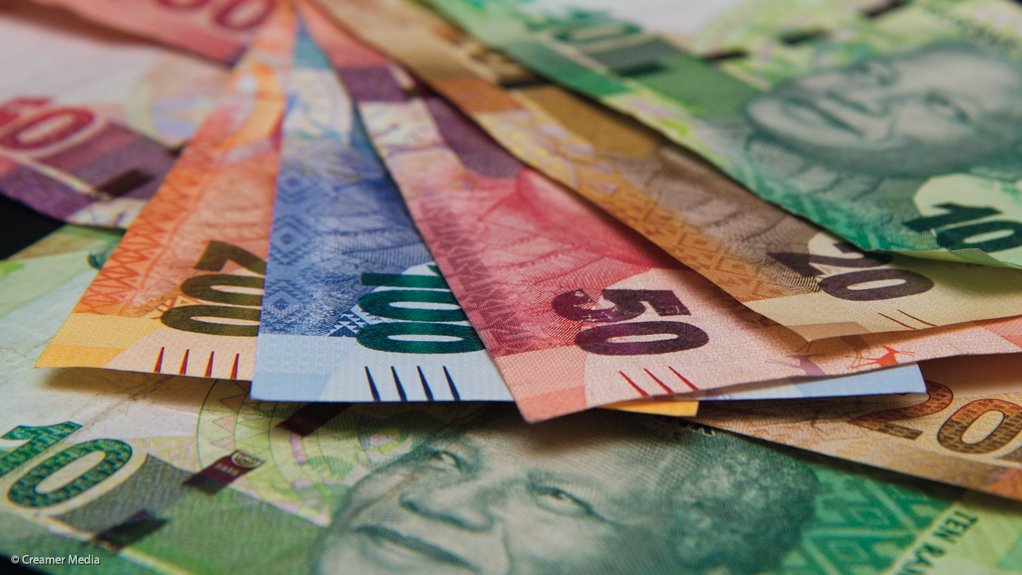World Bank warns rand could take hit amid global policy flux
The World Bank has issued a warning that the South Africa currency could come under pressure in 2017, owing to heightened policy uncertainty in the US and Europe, which could constrain capital flows to emerging and frontier markets.
However, the bank’s baseline projection is for the South African economy to expand by 1.1% in 2017 – up from its estimate of only 0.4% growth in 2016 – owing to an expected increase in commodity prices and a modest recovery in global growth.
Global growth, which is estimated to have slowed in 2016 to a post-crisis low of 2.3%, is expected to rise to 2.7% this year, mainly driven by improvements in emerging market and developing economies.
Nevertheless, the bank’s ‘Global Economic Prospects’ report stresses that the risks to the outlook for South Africa and sub-Saharan Africa are heavily tilted to the downside.
“Externally, heightened policy uncertainty in the US and Europe could lead to financial market volatility and higher borrowing costs or cut off capital flows to emerging and frontier markets. A reversal of flows to the region would hit heavily traded currencies, like the South African rand, hard.”
The bank says the potential effects of policy proposals suggested by the new US administration are highly uncertain and have not been fully incorporated into its forecasts. “Fiscal stimulus, if implemented, could result in stronger US growth than currently predicted. However, some other policy changes, or persistent policy uncertainty, could dampen US and international growth prospects.”
The report also cautions that a sharper-than-expected slowdown in China could weigh on demand for export commodities and undermine prices. “Continued weakness in commodity prices would strain fiscal and current account balances, forcing spending cuts that could weaken recovery and investment.”
Internal risks for the region, meanwhile, are listed as: a failure to adjust to low commodity prices and weak global demand; populist pressures, which may deter authorities from taking the necessary measures to contain fiscal deficits and rebuild policy buffers; and a deterioration of security conditions in some countries.
The bank’s latest gross domestic product (GDP) growth projection for South Africa in 2017 is unchanged from the one it published in June.
However, its 2018 projection of 1.8% represents a 0.2 percentage point downward revision. Likewise, the 2016 estimate is lower than the 0.6% figure released in the middle of last year. The bank is also not expecting any acceleration beyond 1.8% in 2019.
The 2016 estimate is in line with the South African Reserve Bank’s most recent forecast of 0.4%, which represented an upward revision from an earlier forecast of 0%.
In October National Treasury lowered its 2016 growth forecast to 0.5%, from 0.9% in February. For 2017, the National Treasury is expecting a recovery in GDP growth to 1.3%, followed by 2% in 2018.
The World Bank attributes South Africa’s weak 2016 performance to the effects of “low commodity prices and heightened governance concerns”.
“Growth in South Africa is expected to edge up to a 1.1% pace this year. South African output will be held back by tight fiscal policy and high unemployment that is weighing on consumer spending,” the bank said.
The poor performance of South Africa, Nigeria and Angola in 2016 is also held up by the bank as the main reason for sub-Saharan Africa’s growth having slowed to its weakest pace in over two decades, or just 1.5%.
“On a per capita basis, regional GDP contracted by an estimated 1.1%. South Africa and oil exporters, which contribute two-thirds of regional output, accounted for most of the slowdown, while activity in non-resource intensive economies generally remained robust.”
Sub-Saharan Africa’s growth is expected to pick up modestly to 2.9% in 2017 as the region continues to adjust to lower commodity prices. Growth in South Africa and oil exporters is anticipated to be weaker, while growth in economies that are not natural-resource intensive should remain robust.
Comments
Press Office
Announcements
What's On
Subscribe to improve your user experience...
Option 1 (equivalent of R125 a month):
Receive a weekly copy of Creamer Media's Engineering News & Mining Weekly magazine
(print copy for those in South Africa and e-magazine for those outside of South Africa)
Receive daily email newsletters
Access to full search results
Access archive of magazine back copies
Access to Projects in Progress
Access to ONE Research Report of your choice in PDF format
Option 2 (equivalent of R375 a month):
All benefits from Option 1
PLUS
Access to Creamer Media's Research Channel Africa for ALL Research Reports, in PDF format, on various industrial and mining sectors
including Electricity; Water; Energy Transition; Hydrogen; Roads, Rail and Ports; Coal; Gold; Platinum; Battery Metals; etc.
Already a subscriber?
Forgotten your password?
Receive weekly copy of Creamer Media's Engineering News & Mining Weekly magazine (print copy for those in South Africa and e-magazine for those outside of South Africa)
➕
Recieve daily email newsletters
➕
Access to full search results
➕
Access archive of magazine back copies
➕
Access to Projects in Progress
➕
Access to ONE Research Report of your choice in PDF format
RESEARCH CHANNEL AFRICA
R4500 (equivalent of R375 a month)
SUBSCRIBEAll benefits from Option 1
➕
Access to Creamer Media's Research Channel Africa for ALL Research Reports on various industrial and mining sectors, in PDF format, including on:
Electricity
➕
Water
➕
Energy Transition
➕
Hydrogen
➕
Roads, Rail and Ports
➕
Coal
➕
Gold
➕
Platinum
➕
Battery Metals
➕
etc.
Receive all benefits from Option 1 or Option 2 delivered to numerous people at your company
➕
Multiple User names and Passwords for simultaneous log-ins
➕
Intranet integration access to all in your organisation




















